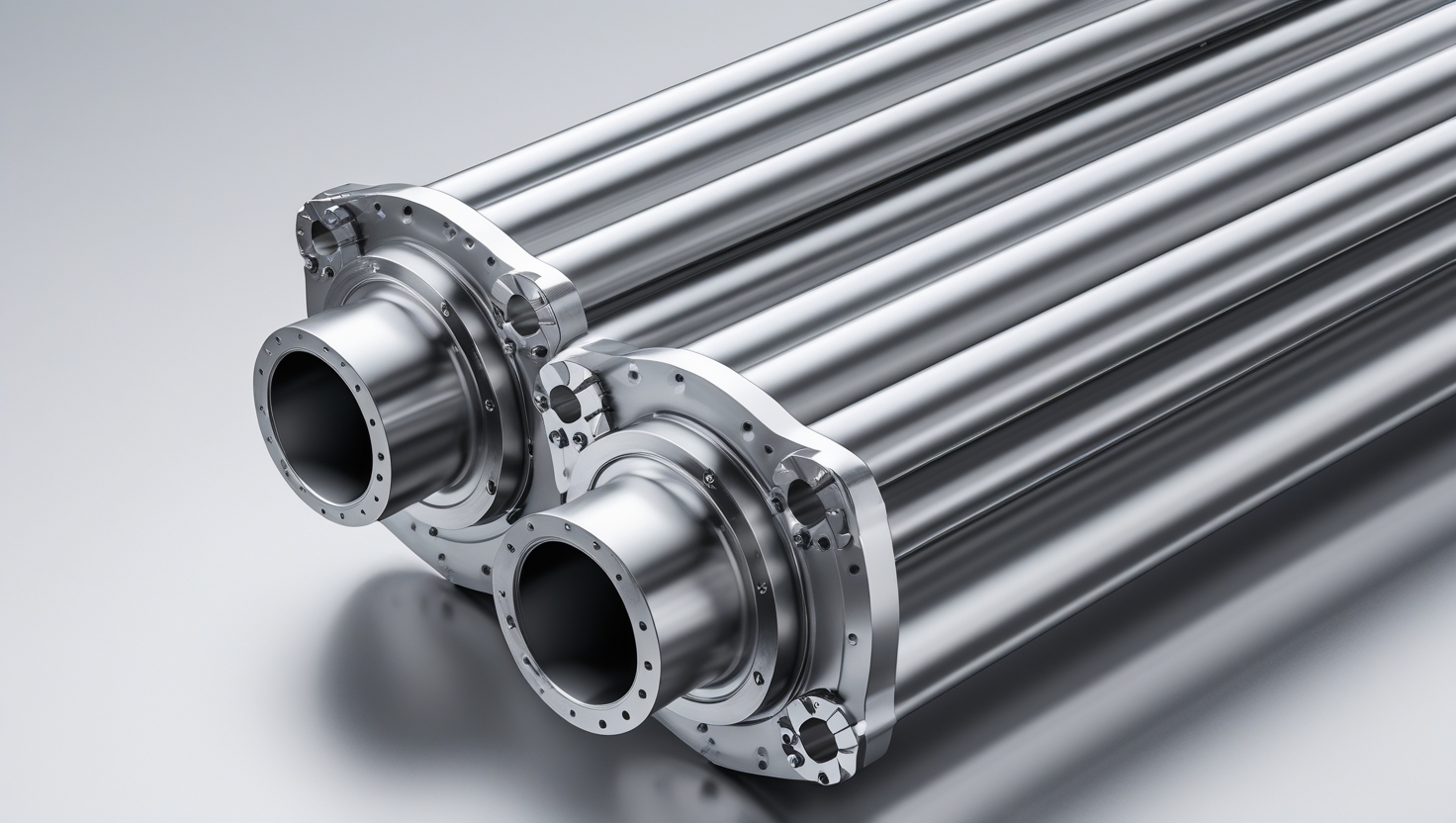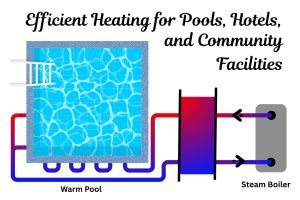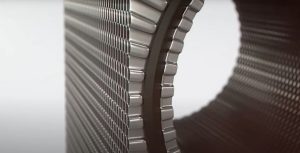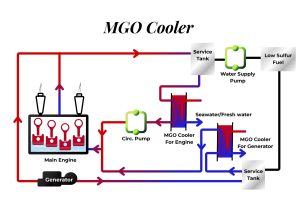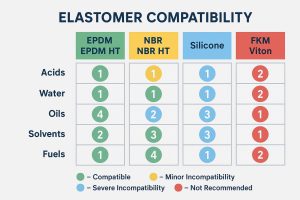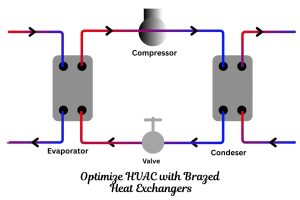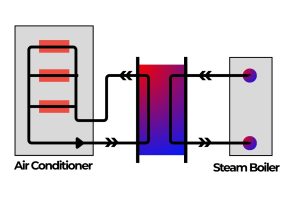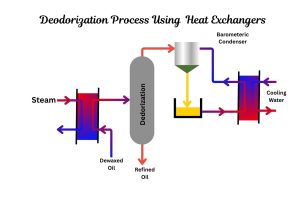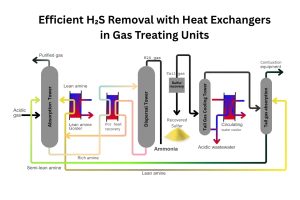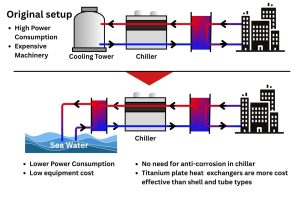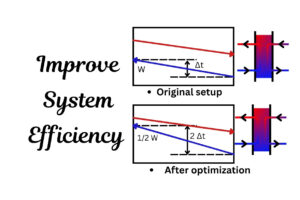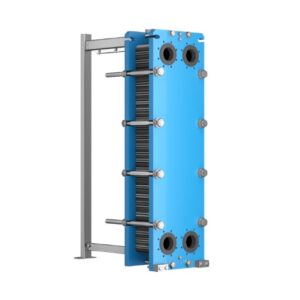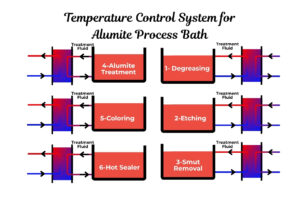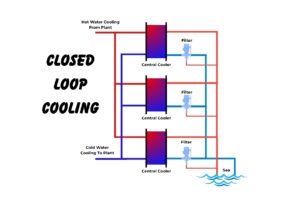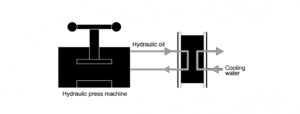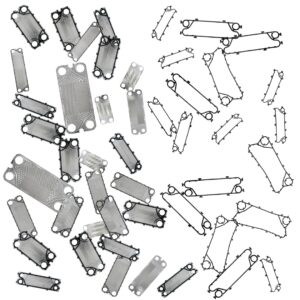Buying Quality Shell and Tube Heat Exchangers: A Purchaser’s Guide to Optimum Design, Materials, and Value Sourcing
Shell and Tube Heat Exchangers (STHXs) are the backbone of heat transfer operations across heavy industries. For purchasers, acquiring an STHX isn’t merely a procurement task; it’s a critical investment in process efficiency, safety, and reliability. A truly “high-quality” STHX is one with an **optimum design** built from **appropriate, high-quality materials** for its specific service, sourced intelligently to deliver the best long-term value, not just the lowest initial price.
Understanding what constitutes a quality STHX and how to navigate material choices and supplier selection is paramount for those with purchase intent. This guide delves into these aspects, offering insights for smart sourcing.
What Defines a High-Quality, Optimum STHX Design?
Optimum design goes beyond simply meeting a heat duty. It’s a balance tailored to your process:
- Correct TEMA Configuration: Selecting the right type (Fixed Tubesheet, U-Tube, Floating Head, etc.) is crucial for thermal expansion handling, pressure rating, and facilitating necessary maintenance like tube bundle cleaning. An optimum design matches the TEMA type to your operational and maintenance needs.
- Accurate Thermal Design: Ensuring the heat exchanger meets the required heat transfer duty under all specified conditions, with appropriate safety margins and considering real-world factors like fouling over time. This involves complex calculations for surface area, fluid velocities, and flow arrangements (number of tube and shell passes).
- Robust Mechanical Design: The exchanger must safely withstand the design pressures and temperatures, thermal stresses, and potential vibration. This involves selecting appropriate shell, head, and tubesheet thicknesses and adhering strictly to international pressure vessel codes (like ASME) and STHX standards (like TEMA).
- Quality Fabrication and Testing: High-quality manufacturing, including proper welding procedures, non-destructive testing (NDT), hydrostatic testing, and adherence to tight tolerances, ensures the mechanical integrity and leak-tightness of the unit.
Materials Matter: Types Used in STHXs
The “grade” of materials is less about a single rating and more about selecting the *correct* material with certified properties for each specific component (shell, tubes, tubesheets, baffles, heads, nozzles, gaskets, bolting) based on the exact process conditions (corrosiveness, temperature, pressure, potential for erosion or thermal fatigue). Common materials include:
- Carbon Steel: Cost-effective and common for the shell side when the fluid and external environment are non-corrosive, and for tubes handling non-corrosive fluids like water or steam.
- Stainless Steels (e.g., AISI 304, 316, Duplex, Super Duplex): Widely used due to varying levels of corrosion resistance against acids, chemicals, and general environments. AISI 316 offers better resistance to chlorides than 304. Duplex and Super Duplex grades provide higher strength and superior corrosion resistance for more demanding services.
- Copper Alloys (e.g., Brass, Copper-Nickel): Often used for tubes, especially in water or steam service, due to excellent thermal conductivity and resistance to biofouling. Copper-nickel is common in marine applications for its saltwater resistance.
- Nickel Alloys (e.g., Alloy 400, 625, Hastelloy C-276): Reserved for highly corrosive applications involving strong acids, alkalis, or mixed chemicals where stainless steels are insufficient. Different nickel alloys target specific corrosive mechanisms. Hastelloy C-276 offers exceptionally broad resistance.
- Titanium: Primarily used for tubes and tubesheets in services with high chloride content, such as seawater, brines, and certain oxidizing corrosive chemicals.
The origin of these materials traces back to mining operations for iron, chromium, nickel, copper, titanium, molybdenum, and other alloying elements in various regions globally. Raw materials are processed into standard mill products (plates, pipes, tubes) adhering to international standards (like ASTM, ASME) before being fabricated into heat exchanger components.
History, Origin, and Manufacturing
The Shell and Tube Heat Exchanger design evolved significantly during the Industrial Revolution, driven by the need for efficient heat transfer in steam engines and early chemical processes. Based on fundamental principles of thermodynamics and fluid dynamics, the design became standardized in the early 20th century with organizations like TEMA publishing codes that govern mechanical design and fabrication practices. This standardization, coupled with advancements in metallurgy allowing the use of diverse materials, cemented the STHX as the industrial standard. Manufacturers worldwide adapted and refined fabrication techniques (like tube-to-tubesheet welding or rolling) to build these exchangers reliably to code requirements.
Sourcing for Value: How to Get the Best Price on Quality
For purchasers, the “best price” for a high-quality STHX isn’t the lowest bid, but the one that offers the lowest total cost of ownership (TCO) over its operational life. This means balancing upfront cost with reliability, energy efficiency, and maintenance needs. Here’s how to source for value:
- Precision Specification is Paramount: Work with experienced engineers to develop a detailed specification that precisely defines process conditions, required thermal duty, allowable pressure drops, design pressure/temperature, and specific material requirements for each component based on corrosion analysis. **Do not over-specify materials or design features**, as this significantly increases cost without adding necessary value. (Consulting a [GPHE Selection Guide](https://heatingformula.com/en/gphe-selection/) or similar resources helps understand the impact of specifications).
- Partner with Reputable Manufacturers: Choose suppliers with a demonstrated history of designing and fabricating STHXs from the specified materials to relevant codes (ASME, TEMA). Their engineering expertise ensures an optimum design, their quality control prevents manufacturing defects, and their experience ensures material traceability. They also have the purchasing power and relationships with global mills to source certified raw materials effectively.
- Compare Quotes Based on Identical Specifications: Ensure all suppliers are quoting on the exact same technical requirements. A lower price might indicate a deviation in material grade, thickness, testing procedures, or design margins. Ask questions to clarify any discrepancies.
- Inquire About Fabrication Quality and Testing: Understand the manufacturer’s welding procedures, NDT practices, and pressure testing. These directly impact the reliability and lifespan of the exchanger. Requesting material certificates (like EN 10204 3.1/3.2) ensures you receive the specified materials.
- Consider Lifecycle Costs: A slightly more expensive design upfront might offer easier maintenance access (e.g., a Floating Head vs. Fixed Tubesheet) or be more energy-efficient, leading to significant savings over years of operation.
Main Suppliers in the STHX Market
The Shell and Tube Heat Exchanger market includes many global manufacturers and specialized regional fabricators. Some of the prominent global players known for their STHX offerings include Alfa Laval, GEA, Kelvion, Koch Heat Transfer, Chart Industries, and others. These companies serve various industries and offer a wide range of designs and materials. The sourcing of materials for these suppliers happens on a global scale, based on material availability, price, and certified quality from primary metal producers.
Conclusion
A high-quality Shell and Tube Heat Exchanger is a product of optimum engineering design, precise material selection, quality fabrication, and adherence to industry standards. For purchasers, achieving the best price means focusing on the total value proposition – a reliable unit that meets process needs efficiently over a long lifespan – rather than just the lowest upfront cost. This is best achieved through accurate specification and partnering with experienced, reputable manufacturers.
Navigating the complexities of STHX design, material selection, and sourcing requires expertise. At HeatingFormula, we specialize in guiding clients to the optimal heat transfer solution for their specific needs. We help you define precise specifications, evaluate design options, understand material choices (from carbon steel to high alloys), and connect you with reliable sourcing to ensure you receive a high-quality Shell and Tube Heat Exchanger that delivers maximum value and performance for your investment. Contact us for expert consultation on your heat exchanger requirements, including the selection of appropriate materials and sourcing GPHE Spare Parts for long-term operational needs.
Frequently Asked Questions (FAQ) About Shell and Tube Heat Exchangers
-
Q: What defines optimum design for a Shell and Tube Heat Exchanger?
A: Optimum design for an STHX means achieving the required thermal performance while minimizing pressure drop, ensuring mechanical integrity for specified pressures and temperatures, facilitating maintenance access, and considering long-term reliability and cost-effectiveness for the specific process conditions. -
Q: Why is material selection critical for Shell and Tube Heat Exchangers?
A: Material selection is critical because it directly impacts the STHX’s ability to withstand corrosion, high temperatures, pressure, and fouling. Choosing the right material for each component (shell, tubes, tubesheets) ensures the exchanger operates safely and reliably over its intended lifespan, preventing costly failures and downtime. -
Q: How can a purchaser ensure they are getting a high-quality STHX?
A: Ensure the manufacturer follows recognized design codes (like ASME and TEMA), has strong quality control procedures (material traceability, welding qualifications, non-destructive testing, hydrostatic testing), possesses proven engineering expertise, and has positive references or history in similar applications. -
Q: What are the most common materials used in Shell and Tube Heat Exchangers?
A: Common materials include Carbon Steel (often for the shell in non-corrosive environments), Stainless Steels (304, 316, Duplex) for general corrosion resistance, Copper Alloys (for water service, good thermal conductivity), Nickel Alloys, and Titanium (for highly corrosive or high-temperature applications). -
Q: What is the best strategy for sourcing a Shell and Tube Heat Exchanger at a good price?
A: The best strategy is to focus on value over just the lowest upfront cost. This involves precise engineering specification to avoid over-spending on materials or features you don’t need, partnering with reputable manufacturers known for quality and expertise, considering the total cost of ownership (including maintenance and longevity), and getting multiple, comparable quotes based on identical, detailed specifications.
